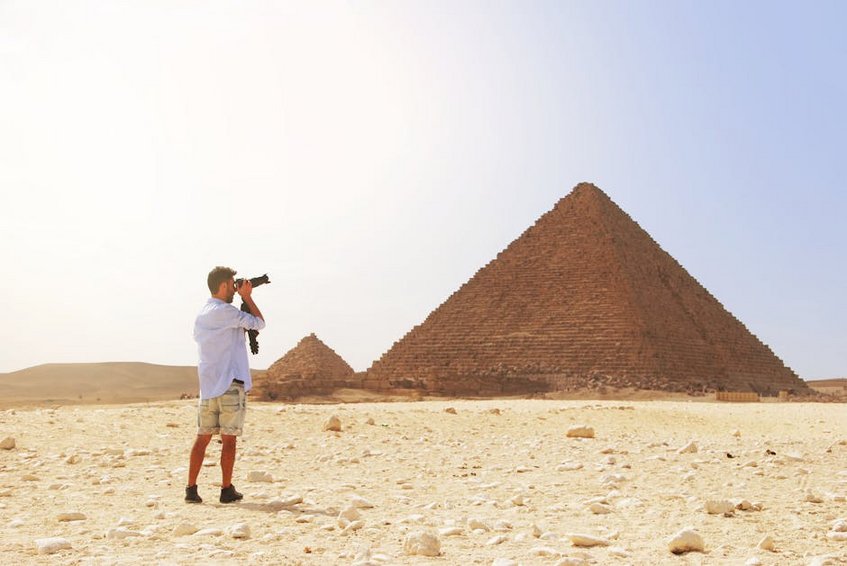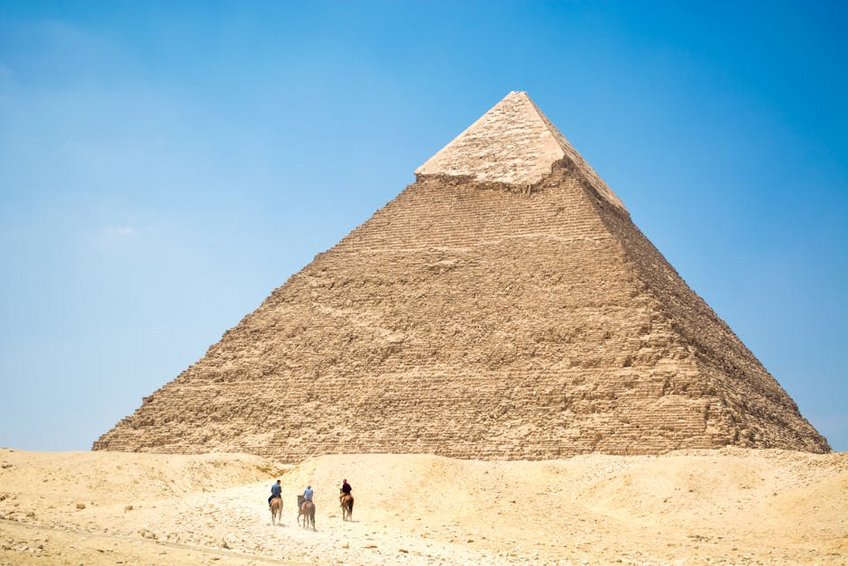Exploring the Mysteries of Sudan Nubian Pyramids
When you think of ancient pyramids, your mind might instantly drift to the iconic structures in Egypt, but have you ever heard of the Sudan Nubian Pyramids? Nestled in the deserts of modern-day Sudan, these lesser-known marvels offer a unique glimpse into the Kingdom of Kush, a civilization that rivaled ancient Egypt in power and sophistication. Unlike their Egyptian counterparts, the Sudan Nubian Pyramids are steeper, more numerous, and scattered across sites like Meroë, Nuri, and El Kurru, providing an off-the-beaten-path adventure for history enthusiasts and curious travelers alike. You’ll discover over 200 pyramids here, built as tombs for kings and queens, with intricate carvings and hieroglyphs that tell stories of a rich cultural heritage. Visiting these sites feels like stepping back in time, where the silence of the desert amplifies the awe of standing before structures that have endured for millennia. As you plan your journey, remember that the Sudan Nubian Pyramids aren’t just archaeological wonders; they’re a testament to human ingenuity and a must-see for anyone passionate about uncovering hidden chapters of history. This guide will walk you through everything from practical travel tips to cultural insights, ensuring your visit to the Sudan Nubian Pyramids is as enriching as it is unforgettable.
Sudan Nubian Pyramids Essential Information – What You Need to Know
Before you embark on your adventure to the Sudan Nubian Pyramids, it’s crucial to understand the basics of this incredible destination. Located primarily in the Nile Valley region of Sudan, these pyramids date back to the Napatan and Meroitic periods, roughly from 800 BCE to 350 CE, and served as royal burial sites for the rulers of the Kingdom of Kush. You’ll find them clustered in key areas like Meroë, which is a UNESCO World Heritage Site and home to the largest concentration of pyramids, offering a more intimate experience compared to the crowded Egyptian sites. The climate here is predominantly arid, with scorching days and cool nights, so packing appropriately is essential. As a traveler, you’ll need to consider visa requirements; for US and EU passport holders, a visa is required and can often be obtained through Sudanese embassies or via tour operators who facilitate the process. English isn’t widely spoken outside major cities, so learning a few Arabic phrases or hiring a local guide can enhance your experience. Safety is generally manageable with proper planning, but it’s wise to check travel advisories and travel in groups, especially given the remote locations. The Sudan Nubian Pyramids represent a profound historical legacy, and understanding their context will deepen your appreciation as you explore these ancient treasures.
Historical Background – What You Need to Know
- The Sudan Nubian Pyramids were constructed by the Kingdom of Kush, a civilization that controlled trade routes and often interacted with ancient Egypt, leading to cultural exchanges but distinct architectural styles, such as steeper angles and smaller bases.
- Key sites include Meroë, where over 50 pyramids stand, and Nuri, the burial place of Taharqa, one of Kush’s most powerful pharaohs; each location offers unique insights into royal rituals and artistic achievements.
- Preservation efforts are ongoing, with organizations like UNESCO working to protect these sites from environmental threats, so your visit supports cultural heritage while respecting guidelines to minimize impact.
- Budget travelers can expect to spend around $800-1,200 USD for a week, focusing on group tours, basic guesthouses, and local meals, with entry fees to pyramid sites averaging $10-15 USD each.
- Mid-range options cost $1,500-2,500 USD, including private guides, comfortable hotels in Khartoum, and domestic flights or better vehicles for desert travel, offering a balance of comfort and immersion.
- Luxury experiences range from $3,000-5,000 USD, featuring exclusive archaeological tours, high-end accommodations, and personalized itineraries with experts, ideal for those seeking in-depth historical insights.
- UNESCO World Heritage Site – Archaeological Sites of the Island of Meroe
- Lonely Planet Sudan Travel Guide
Key Details for First-Time Visitors
If you’re planning your first trip to the Sudan Nubian Pyramids, start by focusing on accessibility and timing. Most tours begin in Khartoum, Sudan’s capital, where you can arrange transportation to sites like Meroë, which is about a 3-4 hour drive away. The best months to visit are between November and February, when temperatures are milder, averaging 25-30°C (77-86°F), making exploration more comfortable. You’ll want to wear lightweight, breathable clothing in neutral colors to blend in culturally, and don’t forget a hat, sunscreen, and plenty of water, as shade is limited. Entry fees are typically around $10-20 USD per site, and hiring a local guide for $30-50 USD per day is highly recommended to gain deeper insights into the history and avoid getting lost in the vast desert landscapes. Remember, photography is allowed, but using flash inside tombs may be restricted to preserve the artifacts. By preparing with these details, you’ll ensure a smooth and respectful visit to the Sudan Nubian Pyramids.

Sudan Nubian Pyramids Planning Your Trip – A Step-by-Step Guide
Planning a trip to the Sudan Nubian Pyramids requires careful consideration to make the most of your experience in this remote and historically rich region. Start by outlining your itinerary around the main pyramid sites, such as Meroë, Nuri, and El Kurru, which can be covered in 5-7 days if you’re focused, but extending to 10 days allows for a more relaxed pace and additional cultural stops. You’ll need to book flights into Khartoum International Airport, with connections from major hubs like Istanbul or Dubai, and then arrange ground transport, often through tour companies that specialize in Sudanese archaeology. Budget-wise, expect to spend $1,500-3,000 USD per person for a mid-range trip, including flights, accommodations, guides, and entry fees, but costs can be lower if you opt for group tours or basic lodging. It’s essential to obtain travel insurance that covers medical evacuation, given the limited healthcare facilities in rural areas, and to register with your embassy upon arrival for safety. Pack essentials like a first-aid kit, portable charger, and copies of your documents, as internet access can be spotty. By planning ahead, you’ll navigate the logistics smoothly and fully immerse yourself in the wonder of the Sudan Nubian Pyramids.
Best Time to Visit Sudan Nubian Pyramids
The ideal time to explore the Sudan Nubian Pyramids is during the cooler, dry season from November to February, when daytime temperatures range from 20-30°C (68-86°F), making it pleasant for walking and photography. Avoid the summer months from May to September, as temperatures can soar above 40°C (104°F), leading to heat exhaustion and limited visiting hours. If you’re a photographer, aim for early mornings or late afternoons when the light casts dramatic shadows on the pyramids, enhancing their ancient beauty. Shoulder seasons like March or October are also viable but may have occasional sandstorms, so check weather forecasts and pack accordingly. This timing ensures you enjoy the sites comfortably while avoiding the extreme conditions that can detract from your experience.
Budget Planning and Costs
Essential Preparation Checklist
To ensure a safe and enjoyable trip to the Sudan Nubian Pyramids, begin by securing your visa at least a month in advance, as processing can take time, and check if your tour operator assists with this. Vaccinations for hepatitis A, typhoid, and yellow fever are recommended, and carry a basic medical kit with rehydration salts and anti-diarrheal medication. Pack clothing that covers shoulders and knees to respect local customs, along with sturdy walking shoes for uneven terrain, and a power bank for electronics since electricity may be unreliable. Learn a few key Arabic phrases like “shukran” (thank you) to connect with locals, and download offline maps or GPS apps for navigation in remote areas. Finally, inform someone of your itinerary and carry emergency contacts, as cell service can be limited near the pyramids. This preparation will help you focus on the awe-inspiring history without unnecessary stress.
Sudan Nubian Pyramids Top Attractions and Activities – Must-See Highlights
Your visit to the Sudan Nubian Pyramids will be filled with unforgettable experiences, from exploring ancient royal tombs to witnessing stunning desert landscapes. Start at the Meroë pyramids, where you can wander among dozens of structures set against golden sand dunes, and don’t miss the opportunity to climb nearby hills for panoramic views, especially at sunrise or sunset when the light paints the stones in hues of orange and red. At Nuri, you’ll find the pyramids of Kushite pharaohs, including the grand tomb of Taharqa, which offers a quieter atmosphere for reflection and photography. For a deeper dive, visit the El Kurru site, where underground tombs feature well-preserved paintings and hieroglyphs, revealing stories of royal life and religious beliefs. Beyond the pyramids, engage in activities like camel trekking through the desert, visiting local Nubian villages to learn about contemporary culture, or joining guided tours that explain the archaeological significance of each site. These attractions not only highlight the grandeur of the Sudan Nubian Pyramids but also provide a holistic travel experience that connects you with Sudan’s rich heritage.
Must-See Highlights for an Unforgettable Visit
When exploring the Sudan Nubian Pyramids, prioritize Meroë’s Royal Cemetery, where you’ll see over 50 pyramids in various states of preservation, each with unique decorative elements like capstones and entrance chapels that hint at their royal origins. Another highlight is the Nuri pyramid field, which includes the largest pyramid in Sudan, built for Pharaoh Taharqa, and allows you to descend into subterranean chambers for a closer look at ancient artistry. Don’t skip the Museum of Sudanese Antiquities in Khartoum, where artifacts from the pyramids, such as jewelry and pottery, provide context before you head to the sites. These spots offer a comprehensive view of Kushite civilization and ensure you capture the essence of the Sudan Nubian Pyramids in your travels.
Hidden Gems and Local Favorites
Venture beyond the main sites to discover hidden gems like the pyramids at Jebel Barkal, a sacred mountain considered the birthplace of Kushite culture, where you can explore temples and lesser-known tombs with intricate carvings. Local guides often recommend visits to nearby Nubian communities, where you can share tea with residents and hear oral histories about the pyramids, adding a personal touch to your journey. For a unique experience, consider a stargazing night in the desert near Meroë, where the lack of light pollution reveals a brilliant canopy of stars, making the Sudan Nubian Pyramids feel even more mystical. These off-the-beaten-path activities enrich your adventure and offer insights that typical tours might miss.
Sudan Nubian Pyramids Practical Travel Information – Getting Around and Staying Safe
Navigating the Sudan Nubian Pyramids region involves some logistical planning, but with the right information, you’ll find it manageable and rewarding. Transportation options include hiring a 4×4 vehicle with a driver, which costs $100-200 USD per day and is essential for traversing desert roads, or joining group tours that provide shared rides from Khartoum. Accommodations range from basic campsites near the pyramids for $10-20 USD per night to mid-range hotels in nearby towns like Shendi or Atbara, priced at $40-80 USD, offering amenities like air conditioning and meals. For communication, purchase a local SIM card in Khartoum for around $10 USD, as service can be unreliable in remote areas, and always carry cash in Sudanese pounds or USD, as credit cards are rarely accepted outside cities. Safety-wise, stick to well-traveled routes, avoid political demonstrations, and follow local advice, as the desert environment poses risks like heatstroke or getting lost. By understanding these practical aspects, you’ll enjoy a stress-free exploration of the Sudan Nubian Pyramids while immersing yourself in their ancient allure.
| Category | Options/Features | Price Range (USD) |
|---|---|---|
| Accommodation | Basic guesthouses, desert camps, mid-range hotels | $10-80 per night |
| Transportation | 4×4 rentals, group tours, domestic flights | $50-200 per day |
| Food and Dining | Local eateries, hotel restaurants, packed meals | $5-20 per day |


